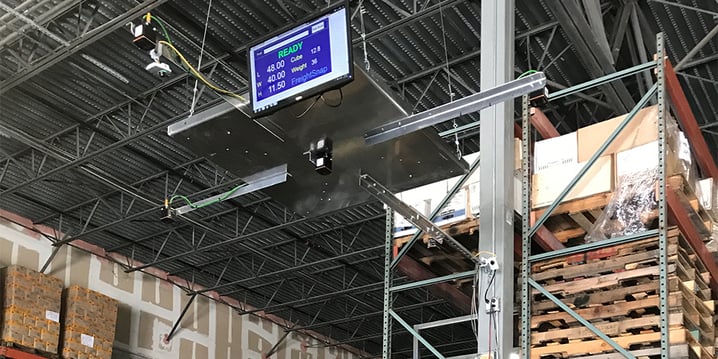REDWOOD LOGIN
Redwood PortalLTL
SCS
SCS Support
Rockfarm
 The process of accurately measuring freight for LTL shipments has undergone some significant changes in recent years. In years past, measuring and billing for cargo logistics was a very simple proposition; the customer was charged by the size of the shipment or its weight. As times and technology evolved, rates for shipping commodities changed to accurately measure the length x width x height (or what overnight shipping pioneers Fed Ex referred to as DIM weights). Today, modern LTL transporters utilize equipment called dimensionalizers or dimensioners to determine the cost of shipping.
The process of accurately measuring freight for LTL shipments has undergone some significant changes in recent years. In years past, measuring and billing for cargo logistics was a very simple proposition; the customer was charged by the size of the shipment or its weight. As times and technology evolved, rates for shipping commodities changed to accurately measure the length x width x height (or what overnight shipping pioneers Fed Ex referred to as DIM weights). Today, modern LTL transporters utilize equipment called dimensionalizers or dimensioners to determine the cost of shipping.
The DIM weight concept started with overnight shippers, including Fed Ex back in the early 1980’s. At the time of pick-up, the courier would measure the length x width x height and compare those dimensions with the weight of the package. This created a dimension factor – the greater dimension factor (or whether the package weighed more than the DIM factor) became the charged rate. This practice evolved and changed throughout the years but became an official standard in 2015 when the USPS began integrating DIM weights into their shipping charges.
A dimensioner or sometimes spelled dimensionalizer is a volume and weight measuring machine or device that factors a three-dimensional or “cube” shaped object including parcels, packages, cartons, and boxes. When the volume of the item is determined, it calculates a shipping rate based on how much space or weight it takes up within a shipping container.
In the past, LTL’s would charge customers based on weight or shipping class (such as time needed to expedite a shipment). However, over the past few years, LTL carriers have embraced the DIM weight billing process – as it is more accurate, and fair to the customer and shipper alike. The dimensionalizer allows LTL’s to collect shipping revenue based on the space that the shipment occupied on trailers. This billing model has been used across the globe for years – but eventually found its way to the LTL industry.
The use of a dimensioner vastly improved shipping efficiency for carriers. Before using this equipment, LTL shippers would provide their customers with a ‘ballpark estimate’ for shipping rates based on the size of the customer's load, miles or time needed to transport the commodity, or other cargo packed into each shipping trailer. When the final bill came to the customer, the prices may have changed from the initial bid due to multiple factors – but mainly, inaccurate measurements of the shipment.
The dimensionalizer has removed this variable from the equation, providing customers and LTL carriers with accurate estimations for shipping a product from one location to another. The dimensionalizer also helps LTL’s plan and load their shipments more accurately, provide better arrival estimates to customers, and in the end – saves money for the LTL carrier.
Contrary to popular belief, the use of dimensioners is quite beneficial for customers. As we stated above, in years past, shipping rates would change based on the actual weight of the parcel, other items in the container, and several variables that were out of the control of the shipping customer. In some instances, the customer would receive their bill and spend hours on the phone or email with the shipper trying to determine why the estimated rate changed.
The older billing methods also made it nearly impossible for companies to accurately budget shipping costs. While in some cases, the changes in shipping estimations would be cheaper to the customer, it still impacted the customer’s monthly P & L statements. The activation of dimensioners for LTL shipments provides easy to budget and accurate shipping costs.
While dimensioners are professionally built and quite accurate at measuring freight, there are a few best practices that LTL carriers should activate.
• Stay on top of routine calibration: There are several types of dimensioners in use today. However, one thing they all have in common is the need for frequent adjustment and calibration. This ensures the DIM calculation is measured accurately. Completing routine maintenance as recommended will also keep the machines in working order.
• Upgrade equipment and software as it becomes available: Many automated dimensionalizers use software to calculate the rate. The manufacturers frequently update software to patch errors or troubled codes. To maintain consistency, make sure to work with the manufacturer to upload software or upgrade equipment as needed.
• Set up shipping profiles: Many new dimensioners allow LTL’s to set up shipping profiles for frequent customers who ship the same commodities. This will save time, resources, and money in the short and long-term.